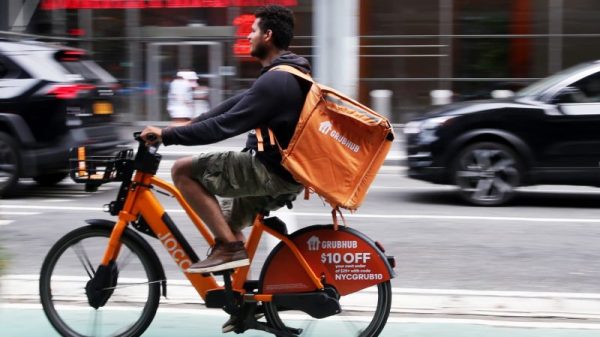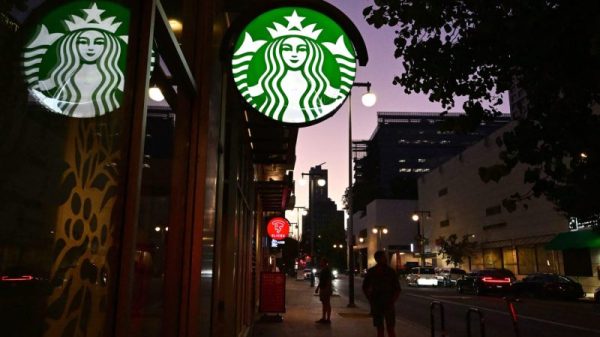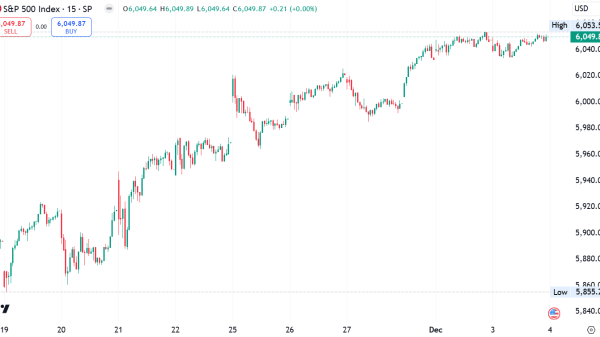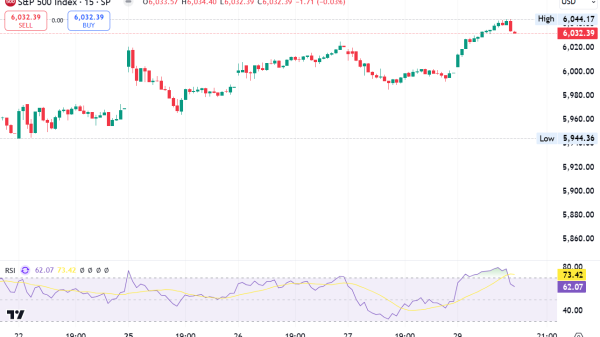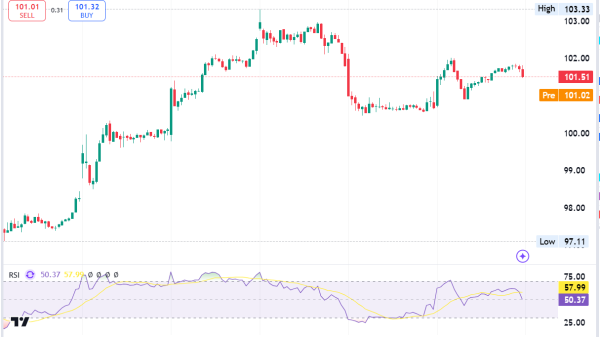Malls used to be the destination for the buzziest stores. Now they’re home to the hottest restaurants.
The slow death of department stores and rise of online shopping have hurt U.S. shopping malls, particularly over the last decade. The once-essential shopping centers have seen their numbers drop from a peak of 2,500 in the 1980s to roughly 700 these days, according to Coresight Research.
But now many in the retail industry say that rumors of the mall’s demise have been greatly exaggerated. Many Gen Z consumers prefer to shop in person and love the mall experience. Creative solutions from developers have turned empty department stores into housing, bringing consumers even closer to stores.
And landlords are devoting more square footage to restaurants and bars, which have become a bigger draw to visit malls.
“It’s been a big shift,” said David Henkes, senior principal at Technomic, a market research firm focused on the restaurant industry. “It used to be that the shopping occasion drove people to the mall and then maybe you grabbed a bite to eat. In a lot of ways, that’s been flipped on its head. Now, the dining options drive people there, and then you’re hoping that they’re going to do a little shopping while they’re there.”
Yelp found that 17 of the 25 most popular mall brands, based on consumer interest, were restaurants, according to a report published in October.
Going back 10 or 20 years ago, restaurants accounted for only about 5% to 10% of general leasing area in malls operated by Brookfield Properties, according to Chris Brandon, the company’s senior vice president of leasing for eating and drinking retail. That would typically include a food court and several full-service restaurants. That’s changed in recent years.
“It’s increased an incredible amount over the last five to 10 years,” Brandon said. “In some of our shopping centers, we’re seeing 20% to 30% of the total [general leasing area] being dedicated to food, and that’s 100% by design.”
Brookfield’s portfolio of 129 malls include Tysons Galleria in McLean, Virginia; Christiana Mall in Newark, Delaware; and First Colony Mall in Sugar Land, Texas. Its mall restaurant tenants include more than 540 full-service eateries and around 2,000 fast-casual establishments.
More than half a century ago, the Paramus Park shopping mall in New Jersey opened a food court on its second floor, becoming the first example of a successful mall food court in the U.S. A decade later, food courts had become of a staple of the American mall, helping the expansion of chains like Sbarro, Mrs. Fields and Auntie Anne’s.
Full-service chains like the Cheesecake Factory, TGI Fridays and California Pizza Kitchen also became mall mainstays.
But those familiar names are no longer the only options for shoppers. These days, malls offer a much wider selection of eateries and refreshments, from regional restaurants to local chefs and emerging bubble tea chains.
“What malls are looking for tend to be more high end, what we might call a ‘contemporary casual’ restaurant,” Henkes said. “It’s not fine dining, per se, but it’s sort of that notch up from just traditional casual.”
Those contemporary casual eateries include upscale options like Korean barbeque, steakhouses or sushi. While price points vary, a meal at these new mall eateries will likely cost upward of $30 per person, if not more.
For James Cook, head of retail research for real estate firm JLL, the expansion in dining options offers an experience that’s familiar — but still elevated.
“The distinction that I make is that I’m not necessarily dressing up nice to go to a mall,” he said. “This is a restaurant where I could pay more money, but not necessarily feel like I have to wear a suit jacket or anything like that.”
The pandemic also made malls a more attractive option to restaurateurs.
During lockdowns, operators saw their traffic disappear. Even when consumers started dining out and commuting again, restaurants in central business districts still struggled to attract diners, given the new hybrid workforce and other changes to consumer behavior. But malls bounced back.
“Even today, foot traffic to suburban malls is back above pre-pandemic levels, where in the cities and the city centers, foot traffic has not returned,” JLL’s Cook said.
That foot traffic also appeals to emerging chains that are looking to expand quickly. Restaurant companies like Sweetgreen and Mendocino Farms have opened new locations in malls as they seek to grow their sales and brand awareness.
“The one thing that our properties can offer is scale, and scale really quickly. If they’re used to doing X in their food truck, now they’re doing X times two or three,” Brandon said.
For example, Din Tai Fung, a Taiwanese restaurant chain, has honed in on malls for its U.S. expansion, according to Alison Lin, Yelp’s head of restaurants. Upcoming locations will open in Scottsdale Fashion Square in Arizona and Brea Mall in Southern California, according to the chain’s website. Din Tai Fung ranked second in Yelp’s report on most popular mall brands by consumer interest. (Din Tai Fung declined to comment).
As malls devote more space to food and drinks, food courts have been supplemented by a newer, more upscale alternative: food halls.
Like food courts, food halls offer an array of dining options, usually from stalls, with general seating available once diners have purchased and picked up their food and drinks.
But unlike food courts, the halls typically offer more expensive options, usually touting ties to local chefs and promising more interesting cuisine than that found at a food court. While a food court sells fare from national chains, food halls typically stick to local vendors that have few locations.
“A food court is to give you a burger, fries or a slice of pizza to keep you shopping longer at the mall,” Cook said. “A food hall is part of the experience.”
Oftentimes, food halls feature multiple vendors. But Eataly is one exception.
The Italian chain sells itself as a trip to Italy, without the plane ride. Its large locations feature full-service restaurants; artisanal groceries; quick-service counters that sell gelato, pizza and espresso; along with cooking classes. Eight of Eataly’s 13 U.S. locations are in malls, with more on the way next year.
Eataly’s North American CEO Tommaso Bruso joined the company last year after two decades in the fashion industry, leading mall brands like Benetton and Diesel.
“People go to the mall for shopping, but also they go for a cultural experience,” Bruso said, adding that Eataly has found success with consumers both in and outside of malls.
But food halls haven’t won over everyone. Brandon said that food courts have performed better for Brookfield’s malls. He pointed to Chick-fil-A and Panda Express as two tenants that typically see strong sales in food courts. In 2023, the average annual revenue for a mall location of a Chick-fil-A was $4.5 million; the chain’s best-performing mall restaurant raked in nearly $19 million in annual sales, according to franchise disclosure documents.
Even with more competition than ever for shoppers, The Cheesecake Factory has managed to stay on top. And it’s showing how restaurants can help a broader mall.
The chain, known for its comprehensive menu and towering columns, was ranked No. 1 in Yelp’s mall brand report.
It’s been a rocky year for the company. Like many restaurants, the chain has struggled to attract diners, many of whom have pulled back their restaurant spending. In its latest quarter, the company’s same-store sales grew just 1.6%. Activist investors have also been putting pressure on the company to spin off its smaller brands, like North Italia. (The Cheesecake Factory declined to comment.)
Still, the company is outperforming the broader casual-dining category, based on metrics provided by industry tracker Black Box Intelligence.
Shares of the Cheesecake Factory have risen 43% this year, outstripping the S&P 500′s gains of 27% over the same period.
While fellow mall staples like California Pizza Kitchen and TGI Fridays have filed for Chapter 11 bankruptcy in recent years, the Cheesecake Factory has escaped the same fate.
And it’s maybe even helped its landlords’ finances. Enclosed malls with a Cheesecake Factory location are more likely to be current on their loan payments, according to a Moody’s Analytics report from 2023. Author Matt Reidy, director of commercial real estate economics for Moody’s, said it was more likely the result the company’s strong site selection, rather than cheesecakes saving a mall.
Still, Reidy said having one of the restaurant’s locations helps. And Brookfield’s Brandon agrees.
“My god, are they productive. It’s pretty incredible what they’re able to do, and they’re a valued partner of ours. We have dozens of leases with them, and we truly value them as a tenant,” he said.









